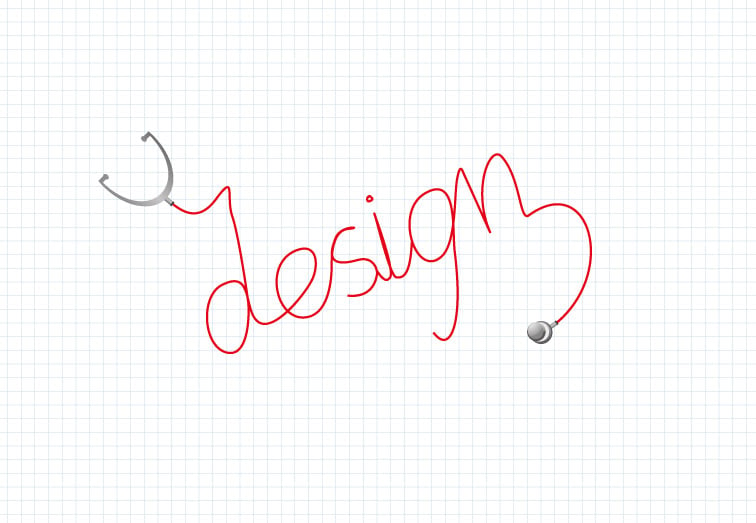HealthManagement, Volume 16 - Issue 2, 2016

Design Council’s founding purpose was to elevate the UK’s industrial design standards in goods manufacturing to support Britain’s economic recovery. Now, after 70 years, much of what we do is centred on how design can help to improve the health and wellbeing of people in the UK and the wider world.
Over the last seven decades, Design Council has made a significant and tangible contribution to solving some of the UK’s most complex challenges by providing design support and the advice, tools and know-how to bring about positive change.
The impact of design is now widely recognised, with Chief Design Officers a common role in businesses worldwide. In 2014 we saw the proposal to appoint a Head of Design in every UK government department and a Chief User Officer on all large government infrastructure projects (All-Party Design and Innovation Group, 2013).
The use of strategic design is becoming intrinsically linked with good foresight and managerial skills. One of Design Council’s finest examples of how design positively affects management thinking in healthcare is its work on reducing violence and aggressive behaviour in A&E.
The Problem
of Violence
Violence and aggression towards frontline hospital staff is estimated to cost the NHS at least £69 million a year (NAO 2003) in staff absence, loss of productivity and additional security. As many as 68,000 physical assaults occur in English NHS hospitals each year (NICE 2015), a figure which continues to rise.
With more than 21 million patients attending A&E (House of Commons Library, 2015) each year, increasing pressure on A&E departments can lead to negative experiences for both patients and staff. In the complex, high-pressure environment of A&E, escalating frustrations can be particularly difficult to manage and diffuse.
The Reducing Violence and Aggression in A&E: Through a Better Experience programme was undertaken by a triumvirate of Design Council, PearsonLloyd and the NHS, and sought to address non-physical aggression and hostility towards staff by improving the A&E experience.
Extensive ethnographic research was conducted at three NHS Trusts. Patient journeys through A&E were mapped alongside incidents of violence and aggression. Insights were gathered to understand why patients might become aggressive and what types of patients might be more prone to becoming aggressive. In response to the research findings, the team developed three solutions to improve the experience of both patients and staff, reducing anxiety and promoting a positive hospital culture:
- The Guidance Solution: a comprehensive package of
information about the department, waiting times and treatment processes via
on-site environmental signage, patient leaflets, and digital platforms;
- The People Solution: a programme of reflective practice designed
to better support NHS frontline staff to manage and learn from incidents of
violence and aggression;
- The A&E Toolkit: a package of information and guidance for
NHS managers, clinicians, designers and healthcare planners who want to develop
and deliver a better service in effective and inspiring environments.
Crucially, these design solutions were co-designed, installed and evaluated within working A&E departments. By doing so, the programme directly bridged the gap between policy thinking about how to manage staff safety on the frontline, and delivery against that policy objective through the application of design and behavioural science to create effective solutions.
The Guidance and People solutions were installed and piloted at two A&E departments: Southampton General Hospital and St George’s Hospital, London. A comprehensive evaluation was carried out by Frontier Economics and independent research company ESRO to test their impact. It found that 75 percent of patients said the improved signage reduced their frustration during waiting times, and threatening body language and aggressive behaviour fell by 50 percent post-implementation. Most tellingly, it discovered that for every £1 spent on the design solutions, £3 was generated in benefits.
Co-design
Another tangible example of how design has benefited healthcare can be found at the Whittington Hospital in Archway, north London. The Whittington is one of the UK’s busiest hospitals, employing 4,000 staff who provide care for more than 500,000 people across north London.
During 2013-14, the hospital collaborated with designers, architects and their own patients to discover how best to use space and redefine the user experience of its pharmacy. Chief Pharmacist, Dr Helen Taylor, knew that collecting a prescription was not a pleasant experience for her patients. They entered the pharmacy often feeling unwell and anxious; feelings only exacerbated by long waiting times and lack of communication. Previous efforts to improve the situation, such as user questionnaires, had resulted in poor levels of patient participation and yielded no clear insights. However, Dr Taylor felt sure the answer lay with design, and turned to Design Council to see how we could support the service delivery.
Over a year, two of Design Council’s expert Design Associates, Anna White and Sean Miller, worked closely with the Whittington pharmacy to analyse the service and pinpoint areas where improvements could be made. Eventually, a shared definition of the problem was agreed, and the team identified three key actions to address: improve the experience for patients, use every intervention as a health promotion opportunity and develop a retail offer to offset expenditure.
Using the findings, the team turned these priorities into a detailed design brief. Design Council then helped the Whittington pick two design agencies to work with: architectural co-design experts Studio TILT, and service design agency Commonground.
The co-design approach meant the designers’ focus was on allowing pharmacy users to collaboratively create a space which would work best for them. Patients provided real-time feedback and responses as they interacted with the new prototype elements in the pharmacy.
The project has measurably improved the patient experience at the Whittington, boosted staff morale and increased sales at the pharmacy. Importantly for the hospital, it has also produced a design model that can be applied to other spaces within its walls, and a willingness to experiment.
Having an internal champion who really understood the process, in this case Dr Helen Taylor, was central to the success of the project. Hospitals are naturally risk-averse environments. However, Dr Taylor’s ability to navigate internal hospital politics and convince staff to engage with the co-design process gave the project credibility and the space to thrive.
The success of the pharmacy project had shown management at the Whittington that the design process could help improve the experience and efficiency of hospital services for both patients and staff. Management subsequently invited Studio TILT back to work on a further project using the same co-design process to help create a major new Ambulatory Care Centre, this time with architects Levitt Bernstein.
After exhaustive prototyping using full-scale mock ups of the new space, Levitt Bernstein then helped realise the innovative designs and ensure technical standards were met.
Layout That Works
The centrally located phlebotomy booth combines so much of what is successful about the new centre. While private when necessary, it is positioned directly in the communal space demonstrating the centre’s challenge to clinical traditions of keeping treatments, waiting and administration separate. The space quite literally demonstrates the integrated care model.
The flow of the centre is shaped as a ‘figure eight’, which passes all cubicles and treatment rooms allowing infection control and easy mobility for staff and patients. Many areas have been created as multifunctional, including the children’s play area, which doubles as a designated observation area. Children can be treated with ease without even being aware.
On opening the new ACU, Minister of State for Care and Support, Norman Lamb commented on the design approach to the new centre: “I confirm I have seen the future of healthcare in the UK. This new centre is a fantastic experience for the patients by fusing together the skills in the community with this exceptional centre of excellence. Patients here are very enthusiastic about their experience and appreciate how different it is to a busy A&E department" (Design Curial, 2015).
Dr Taylor attested to the legacy of working with Design Council and learning about the power and value of co-design: “As we get funding for different bits, we implement them. The hospital’s management team feels strongly that we should just push work like this through because it has such a good effect on patients.” That, in a nutshell, is what Design Council’s work is all about. We believe that good design begins with having the end user in mind. Good public services are no different. That’s why effective, efficient and above all sustainable public services have design at their heart. So, transforming these services has to begin with people.
Key Points
- The pressures on A&E departments can lead to negative
experiences for both patients and staff. Patients, who are already feeling
vulnerable, can become frustrated and hostilities can easily arise. With A&E
staff bearing the brunt of these tensions, wellbeing in A&E departments can
be particularly low.
- In this context, Design Council, in collaboration with the
Department of Health, looked at how design can alleviate tensions in A&E
departments, with the objective of improving both patient and staff experience
and thereby reducing triggers of violence and aggression.
- Design can improve health outcomes for patients, young and
old and can prevent many common ailments. It can also improve their experience
as a whole.
- A better-designed experience can reduce violence and aggression
in high-pressure environments such as A&E.
- Design can help improve the effectiveness and efficiency of public services, as well as save funds and improve sustainability.
References:
All-Party Parliamentary Design and Innovation Group (2013) Report: Restarting Britain 2: Design & Public Services. [Accessed: May 12 2016] Available from http://www.policyconnect.org.uk/apdig/research/report-restarting-britain-2-design-public-services
Design Council (2013) Case study: Whittington Hospital Pharmacy. Prototyping improves patient experience. [Accessed: 12 May 2016] Available from http://www.designcouncil.org.uk/resources/case-study/whittington-hospital-pharmacy
Design Council (2011) Reducing violence and aggression in A&E through a better experience. [Accessed: 12 May 2016]. Available from https://www.designcouncil.org.uk/sites/default/files/asset/document/ReducingViolenceAndAggressionInAandE.pdf
House of Commons Library (2015) Accident and Emergency Statistics. Briefing Paper Number 6964, 17 July 2015. [Accessed: 12 May 2016] Available from http://www.parliament.uk/briefing-papers/sn06964.pdf
National Audit Office (NAO) (2003) A Safer Place to Work. Protecting NHS Hospital and Ambulance Staff from Violence and Aggression [Accessed: 12 May 2016] Available from https://www.nao.org.uk/wp-content/uploads/2003/03/0203527.pdf
National Institue for Health and Care Excellence (NICE) (2015) Safeguarding NHS staff from violent and aggressive patients. [Accessed: 12 May 2016] Available from https://www.nice.org.uk/news/article/safeguarding-nhs-stafffrom-violent-and-aggressive-patients
Simpson V (2015) Design Recovery: Enlightening Hospital Design [Accessed: 12 May 2016] Available from http://www.designcurial.com/news/design-recovery-enlightening-hospital-design-4555256/


